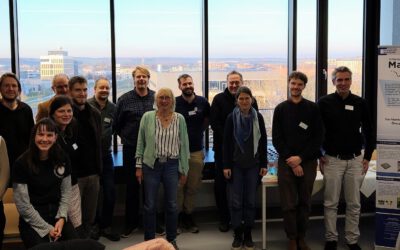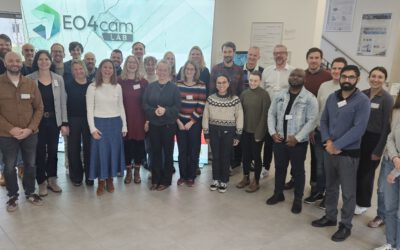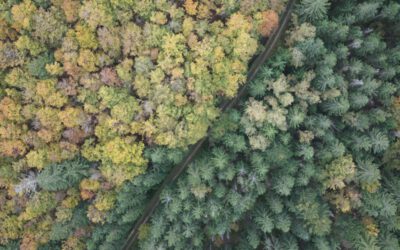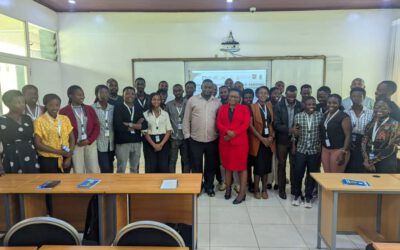As part of the project “Ecosystem Services of the Urban Forest: area-wide modeling based on remote sensing and artificial intelligence” funded by the Deutsche Bundesstiftung Umwelt (DBU), the core team met at the Earth Observation Center (EOC) of the German Aerospace Center (DLR) in Oberpfaffenhofen to present and discuss the findings from the last three years. In the meeting participated Andrea Sofia Garcia from our EORC, Tobias Leichtle from DLR, Thomas Rötzer and Stephan Pauleit from the Technical University of Munich, Klaus Martin from the Company for Remote Sensing and Environmental Research and Hannes Taubenböck from DLR and the EORC.
This project focused on large-scale modeling of urban tree ecosystem services using high-resolution aerial and satellite imagery combined with AI-based analysis. Urban trees provide crucial benefits such as cooling, run-off capture, and carbon storage, which help mitigate the impacts of climate change in cities. However, quantifying these services on a larger scale has been a challenge due to a lack of detailed data.
To bridge this gap, our remote sensing-based data was integrated into the CityTree model, enabling area-wide ecosystem service estimations for common Central European tree species in urban areas. We are excited about the potential impact of this work in facilitating the implementation of climate adaptation strategies by end users such as municipalities and urban planner.
We look forward to further collaborations that contribute to more sustainable and resilient cities.








